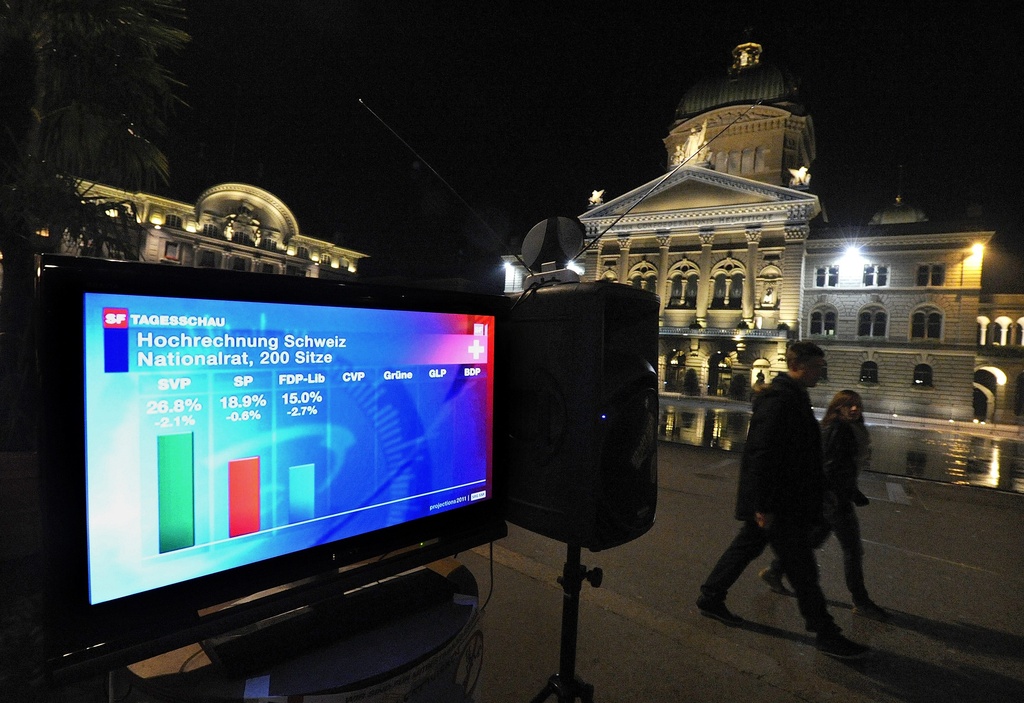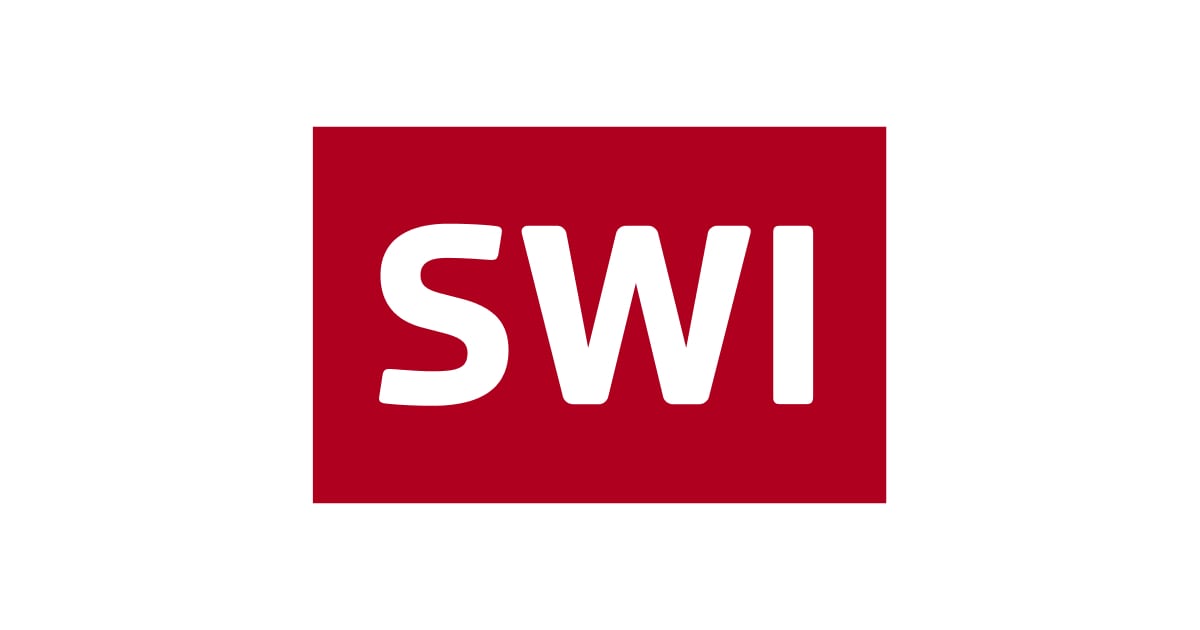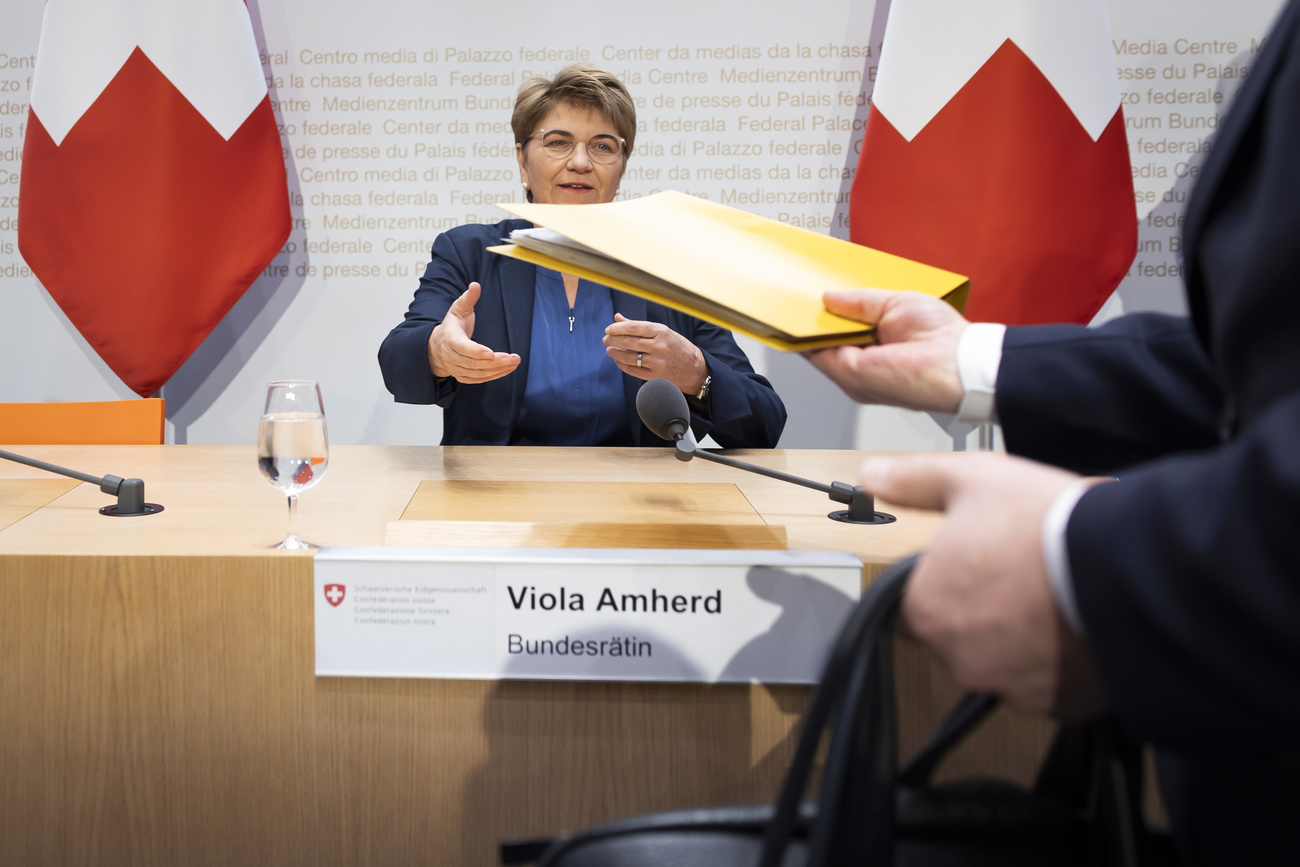Fragmented centre holds sway over right and left

Two small centre parties - the Conservative Democrats and the Liberal Greens – are the winners of Sunday’s parliamentary polls ending years of increasing polarisation.
The rightwing Swiss People’s Party and the centre-left Greens suffered the biggest losses in the House of Representatives compared with the 2007 vote. The two main centre-right parties also saw their support slip, while the centre-left Social Democrats registered a slight gain.
Near-final results show the People’s Party dropping 3.6 percentage points to 25.3 per cent, but still coming top ahead of the centre-left Social Democrats.
However, the gap between the two parties narrowed slightly to 7.7 per cent, according to projections by the Swiss Broadcasting Corporation, swissinfo’s parent company.
The two traditional centre-right parties, the Radicals and the Christian Democrats are down three per cent and 1.5 per cent respectively.
A number of incumbents lost their seats in parliament, notably among the Green Party, while the People’s Party strongman, Christoph Blocher won re-election to parliament, four years after he was voted out as justice minister.
The Liberal Greens for their part won nine new seats (12 total), while the Conservative Democrats clinched nine mandates in the House of Representatives.
The Conservative Democrats were founded by moderate members of the People’s Party in 2008, while the Liberal Greens split off from the Green Party in Zurich in 2004.
Fragmentation
“The Liberal Greens have gone into competition with the Greens, while the Conservative Democrats won at the expense of the centre-right and the rightwing,” political scientist Claude Longchamp of the leading gfs.bern research and polling institute said.
“The boosted centre now holds the key to push through parliamentary decisions,” he added.
However, his colleague Georg Lutz from Lausanne University added that the fragmentation among the centre-right could make it even more difficult for parliament to find agreement.
No single party in party holds a majority in the Swiss parliament and needs to forge alliances with at least two other parties to win votes in the two chambers.

More
House of Representatives
Senate
Only half the seats in elections to the Senate have been declared in the first round of voting.
The Radicals and the Christian Democrats, which have dominated the Senate in the past, both secured seven seats while the Social Democrats clinched eight.
The People’s Party have so far won four seats and the Greens with one. It is not clear whether the Liberal Greens will still be represented in the Senate.
Run-off elections for the Senate will take place next month.
Turnout is estimated at 48.6 per cent, slightly up on 2007. Many voters sent in their ballot by post. Around 21,000 of the total 5.1 million citizens could participate in a trial with electronic voting.
Campaign
The election campaign in the run-up to Sunday was seen as rather low-key with no single party or personality taking centre stage for long.
Political experts say four distinct phases marked the campaign since the beginning of the year, giving no group a decisive advantage.
While it was immigration at the beginning, the nuclear disaster in Japan and the impact of the strong Swiss franc for the Swiss economy set the tone later, before discussions over the future make-up of the seven-member cabinet appeared to win the upper hand.
The elections were monitored by the Organisation for Security and Co-operation (OSCE), which has criticised a lack of transparency over campaign funding.
Switzerland is one of the few countries without clear rules about the financing of political parties. However, the People’s Party is believed to have spent more than any other party on the election campaign.

More
Government, ministers, president
Cabinet elections
Parliament is due to confirm the cabinet members for a four-year term in December. The People’s Party has claimed a second seat in the cabinet, while the Conservative Democrats and the Radicals are trying to defend their seats.
Of the seven cabinet members, only Foreign Minister Micheline Calmy-Rey, a member of the Social Democratic Party, has announced she plans to step down.
Under an informal rule, the major Swiss parties share out their seats in cabinet according to their political strength in parliament.
Elections to the 200-member House of Representatives (compared with 2007):
Seats:
People’s Party: 54 seats (-8)
Social Democrats: 46 (+3)Radical Party: 30 (-5)
Christian Democrats: 28 (-3)
Green Party: 15 (-5)
Liberal Greens: 12 (+9)
Conservative Democrats: 9 (+9)
Others: 6 (-)
Percentages:
People’s Party: 26.6% (-2.3%)
Soc. Democrats: 18.7% (-0.8%)
Radical Party: 15.1% (-2.6%)
Chr. Democrats: 12.3% (-2.2%)
Green Party: 8.4% (-1.2%)
Liberal Greens: 5.4% (+4%)
Cons. Democrats: 5.4% (+5.4%)
Others: 8% (-0.2%)
A record 3,458 candidates competed for the 200 seats in the House of Representatives and 44 of 46 Senate seats.
About 5.1 million citizens, including more than 700,000 Swiss expatriates, were eligible to vote.
About 21,000 registered Swiss expatriates could cast their ballot online in ongoing trials with e-voting.
Turnout was at around 49%. Most votes are cast by post.
Elections take place every four years in the second half of October.
The new parliament will choose the seven-member cabinet on December 14.
There are five main parties, including the Swiss People’s Party, the Social Democratis, the Radicals, the Christian Democrats and the Greens.
The top four won between about 25% and 13%.
The Greens have about 8%, while the Liberal Greens and Conservatives both won more than 5%.

In compliance with the JTI standards
More: SWI swissinfo.ch certified by the Journalism Trust Initiative













You can find an overview of ongoing debates with our journalists here . Please join us!
If you want to start a conversation about a topic raised in this article or want to report factual errors, email us at english@swissinfo.ch.